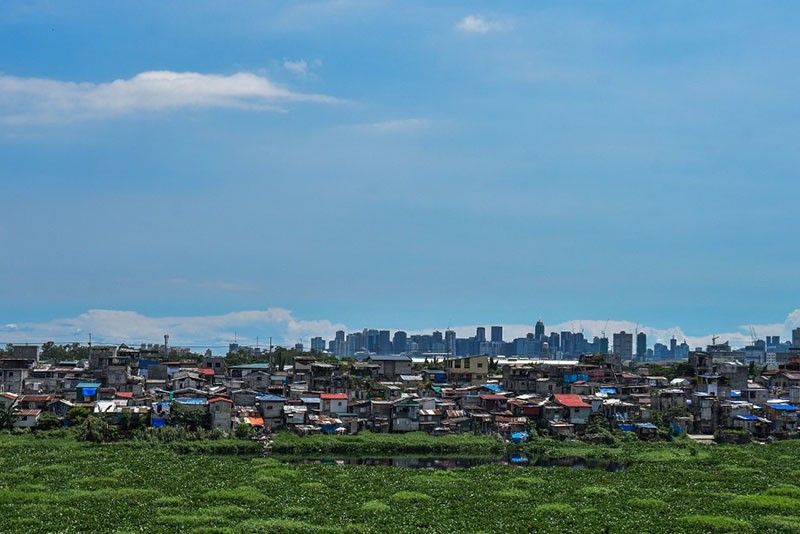Perceptions and reality in managing economies

In the 2022 fourth quarter survey of the Social Weather Stations (SWS), almost half of the respondents at 48% expressed optimism that the Philippine economy will improve in the next 12 months. Some 33% said it will stay the same, while 9% believe it will worsen.
This is a summary of perceptions taken at a specific time, so whether the economy will, indeed, turn out as anticipated is something that will depend on factors that will come into play during the pre-identified period of time.
During the recent Philippine Economic Briefing in Singapore, the country’s economic managers presented a positive outlook on the Philippines’ growth prospects, seen as a turning point towards transitioning into a regional hub for new investments.
Department of Finance (DOF) Secretary Benjamin Diokno expressed confidence that the Philippines is on track to achieve its growth targets in light of improvements in the labor market, slowdown in inflation, and robust fiscal performance driven by higher economic activity, tax reforms, and better tax administration through digitalization. He said that the Philippines’ economic performance also continues to be robust as it outpaced emerging Asian economies.
Diokno also noted how domestic demand will continue to drive the country’s economic growth.
One factor that makes this possible is the country’s young population, which has entered a demographic golden age. This means that most employable Filipinos today are young, who provide an abundant source of workers to spur industries, as well as a source of consumer business for companies.
Among the government’s basic roles are to enable and create a conducive environment to attract investors and support businesses to grow.
Fortunately, in recent years, Diokno reported that the Philippine government introduced economic reforms aligned with this objective, particularly through the passage of the Corporate Recovery and Tax Incentives for Enterprises (CREATE) Act as well as the amendments to the Retail Trade Liberalization Act, Foreign Investments Act, and the Public Service Act. The Regional Comprehensive Economic Partnership (RCEP) is also expected to expand trade, increase export coverage, and deepen economic integration.
More importantly, the government continues to regard the private sector as a crucial partner in national growth and development. National Economic and Development Authority (NEDA) Secretary Arsenio Balisacan noted that the private sector “serves as the engine of growth and innovation in the Philippines, and by leveraging its financial muscle, technological expertise, and managerial capacities, we can deliver better public services, lower consumer prices, and improve the quality of life for all Filipinos.”
For decades, the country’s economy was driven by consumer spending, with investments playing a subdued role in that growth. In view of the changing complexion in the region’s geopolitical character where investors are exiting China – once regarded as the factory of the world – in favor of other business hosts in Asia, the Philippines can become a beneficiary of these changes if it takes its position seriously.
In a separate report made by BMI Research, a subsidiary of the Fitch Group, the Philippines is anticipated to become the world’s 18th largest economy by 2050, driven in large part by its population and rapidly-growing industries such as manufacturing.
These forecasts are based on theoretical estimates and do not factor in yet the actual drivers of growth in the years ahead. Good national policies and other plus factors can speed up the transition to a better economic level, which means that the Philippines may end up having a stronger economy earlier than 2050.
But then again, all these assume that Filipinos and their government do not spoil the gains they achieved during the past decade. There are still big spoilers around the bend such as corruption, high inflation, high cost of living, ballooning national debt, government inefficiency, unemployment, and poverty, among others.
To date, the biggest foreign direct investments are channeled to Singapore, Indonesia and other economies around the Philippines, despite the latter’s natural advantages in its demographics, high level of education of its workforce, language facility, large consumer base, and strategic location. Hence, the government should further its efforts in building these inherent advantages to one that puts the Philippines in a position of competitive strength.
Shifting to a more investment-led growth is expected to usher in a multiplier effect. Not only will these endeavors increase productivity, but these will also generate much-needed jobs and livelihood opportunities for millions of Filipinos, provide income security, aid in poverty reduction, and boost consumer spending that will keep the economy running strong. Investments in manufacturing and infrastructure development may be critical areas to prioritize.
In recent years, the Philippines grappled with various disruptions such as the Taal Volcano eruption in 2020 and, eventually, of the COVID-19 pandemic and Russia’s invasion of Ukraine. Despite these impediments to the country’s growth momentum, history has shown that nations possessing a strong will power are able to rise, recover, and adapt with a positive outlook, and leave a trail of success stories for the world to learn from.
Venice Isabelle Rañosa is a research manager at think tank Stratbase ADR Institute.
- Latest




























